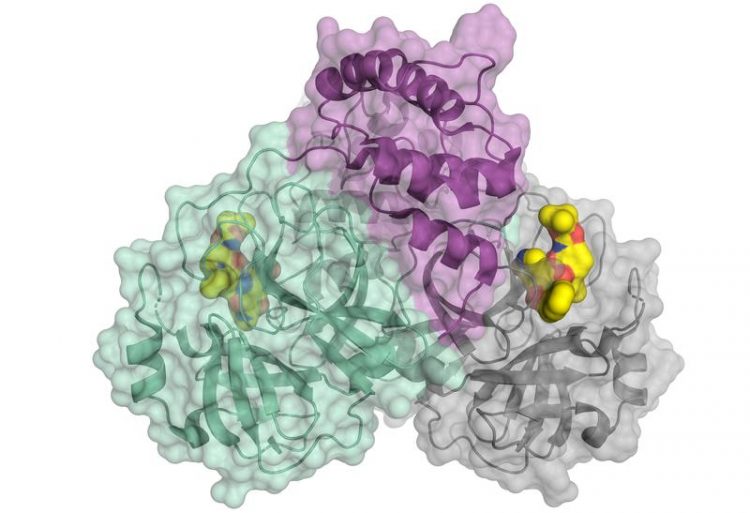Corona research: Consortium of Berlin research and industry seeks active ingredients

At BESSY II, Prof. Rolf Hilgenfeld (Uni Lübeck) was able to analyse an important protein of the SARS-CoV2 virus, the viral main protease which enables the virus to multiply. HZB/H. Tabermann
“Berlin combines important large-scale infrastructure with an excellent network of academic and industrial structural biologists and biochemists. The distances here are short, but resources and expertise must be strategically coordinated to be successful,” says Dr. Holger von Moeller, the owner of the biotech company Molox.
Access to synchrotron radiation is essential for the success of the project. This particularly intense radiation is provided by the Berlin Electron Storage Ring for Synchrotron Radiation (BESSY II), which is operated by the HZB.
Several research groups at Freie Universität Berlin led by Prof. Markus Wahl, Prof. Christian Freund, Dr. Ursula Neu, and Prof. Sutapa Chakrabarti are working with Molox to produce the proteins and then crystallize them.
“The HZB is making all existing infrastructures available to the joint project,” explains Dr. Manfred Weiss, head of the Research Group Macromolecular Crystallography (MX) at HZB.
BASF is the first project partner from the chemical industry to provide funds to start the investigations. Protein crystals will be saturated with potential inhibitors and subsequently analysed on the MX beamlines of BESSY II.
In this way it can be discovered which compounds are particularly good at inhibiting the function of the protein – these should then be the starting points for the development of active substances.
The consortium is currently negotiating with other partners in order to acquire them and their substance libraries. “We are looking forward to this joint project and hope that we will be able to identify new potential active substances against SARS-CoV-2 very quickly”, says Dr. Christian Feiler, project leader at HZB.
Dr. Christian Feiler, E-Mail: christian.feiler@helmholtz-berlin.de
Dr. Manfred Weiss, E-Mail: manfred.weiss@helmholtz-berlin.de
https://www.helmholtz-berlin.de/pubbin/news_seite?nid=21283;sprache=en;seitenid=…
Media Contact
All latest news from the category: Life Sciences and Chemistry
Articles and reports from the Life Sciences and chemistry area deal with applied and basic research into modern biology, chemistry and human medicine.
Valuable information can be found on a range of life sciences fields including bacteriology, biochemistry, bionics, bioinformatics, biophysics, biotechnology, genetics, geobotany, human biology, marine biology, microbiology, molecular biology, cellular biology, zoology, bioinorganic chemistry, microchemistry and environmental chemistry.
Newest articles

High-energy-density aqueous battery based on halogen multi-electron transfer
Traditional non-aqueous lithium-ion batteries have a high energy density, but their safety is compromised due to the flammable organic electrolytes they utilize. Aqueous batteries use water as the solvent for…

First-ever combined heart pump and pig kidney transplant
…gives new hope to patient with terminal illness. Surgeons at NYU Langone Health performed the first-ever combined mechanical heart pump and gene-edited pig kidney transplant surgery in a 54-year-old woman…

Biophysics: Testing how well biomarkers work
LMU researchers have developed a method to determine how reliably target proteins can be labeled using super-resolution fluorescence microscopy. Modern microscopy techniques make it possible to examine the inner workings…





















